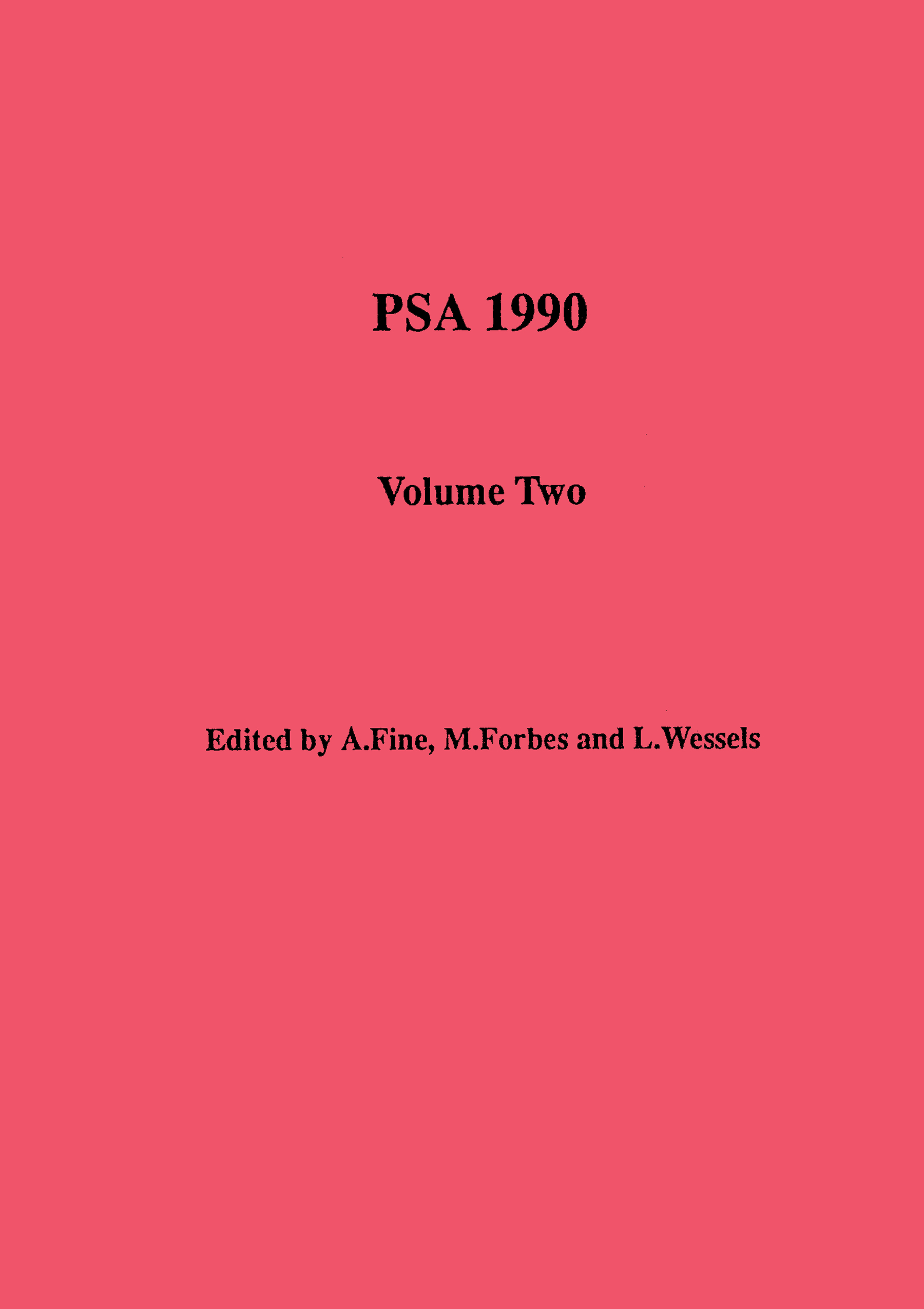Article contents
A Logical Empiricist Theory of Scientific Change?
Published online by Cambridge University Press: 28 February 2022
Extract
There is in the philosophy of science a view of the nature of science which is often referred to as the orthodox view. In my opinion Dudley Shapere has succinctly characterized the main tenets of this view in his article ‘Meaning and Scientific Change’. According to this view, let me refer to it as the orthodox Logical Empiricist (LE) view, the problem of developing a theory of scientific change was not considered to be a legitimate problem for the philosophy of science. A primary concern of the Logical Empiricist was to analyze the logical structure which is shared by all scientific theories. From the point of view of the development of science the logical structure of scientific theories is a constant. What varies from one theory to another is their empirical content not their logical form.
- Type
- Contributed Papers
- Information
- PSA: Proceedings of the Biennial Meeting of the Philosophy of Science Association , Volume 1970 , 1970 , pp. 524 - 535
- Copyright
- Copyright © Philosophy of Science Association 1970
References
Notes
1 in Mind and Cosmos (ed. by Colodny), Pittsburgh 1966, pp. 41-85.
2 op. cit. p. 43.
3 I refer to such authors as Hanson, Feyerabend, Kuhn, and Toulmin.
4 For an orthodox account of reduction, see Nagel's Structure of Science, N.Y. 1961, Chapter 11.
5 Sklar, L., ‘Types of Inter-Theoretic Reduction’, British Journal for the Philosophy of Science 18 (1967) 109-24CrossRefGoogle Scholar.
Schaffner, K., ‘Approaches to Reduction’, Philosophy of Science 34 (1967) 137-47CrossRefGoogle Scholar.
Suszko, R., ‘Formal Logic and the Development of Knowledge’, in Problems in the Phil. of Sci. (ed. by Lakatos, I. and Musgrave, ), Amsterdam 1968, pp. 210-22.CrossRefGoogle Scholar
6 Sklar, L., op. cit.
7 For a formal specification of reduction axioms see Schaffner's ‘Approaches to Reduction’, Philosophy of Science 34 (1967) 137-47CrossRefGoogle Scholar. Roughly, a reduction axiom identifies the concepts in T not shared by T* with concepts in T*. A complete set of reduction axioms specifies the relation of all the concepts in T not shared by T* with concepts in T*; a partial set relates only some, not all. The usual example of an informal reduction axiom is “Temperature is the mean molecular kinetic energy.“
8 ‘Problems of Empiricism’, in Beyond the Edge of Certainty (ed. by Colodny, R.) Englewood Cliffs 1965, p. 164Google Scholar.
9 ‘Reply to Criticism’, in Boston Studies in the Philosophy of Science, Volume II (ed. by Cohen, R. S. and Wartofsky, M.), N. Y. 1965, p. 223Google Scholar.
10 For a good analysis of this case, see Popper's “The Aim of Science’, Ratio 1 (1957) pp. 24–35Google Scholar, and Duhem's: The Aim and Structure of Physical Theory, Chapters 9 and 10.
11 ‘Explanation, Reduction, and Empiricism’ in Minnesota Studies in the Philosophy of Science, Volume III (ed. by Feigl, H. and Maxwell, G.) Minneapolis 1962, p. 60Google Scholar.
12 This account relates to the Sklar account as follows: A reduction transition might be thought of as, what was earlier called strict-transitions (complete or partial, homogeneous or inhomogeneous). The approximate-transitions referred to earlier would be replaced by a correction transition. Instead of ‘A is approximately equal to B,’ we have ‘A is in better agreement with a common empirical base than B’
13 Putnam in ‘How not to Talk About Meanings’, in Boston Studies in the Philosophy of Science, Volume II, p. 206-07, says, “It is perfectly clear what it means to say that a theory is approximately true, as it is clear what it means to say that an equation is approximately correct: it means that the relationships postulated by the theory hold not exactly, but with a certain specifiable degree of error. In short, it means that the theory is not true, but that a certain logical consequency of the theory, obtained, for example, by replacing ‘equals’ with ‘equals plus or minus delta’ is true. Such a logical consequency may be called an approximation theory.” Putnam’s approximation theory as characterized here will not do for an intermediate theory T', as Feyerabend has pointed out in his ‘Reply to Criticism’ (op. cit., pp. 229-30), for the reason that not just any approximation theory will do. Only those approximation theories which are an advance over the preceding theory; i.e., are in better agreement with a common empirical base, will do.
- 1
- Cited by


